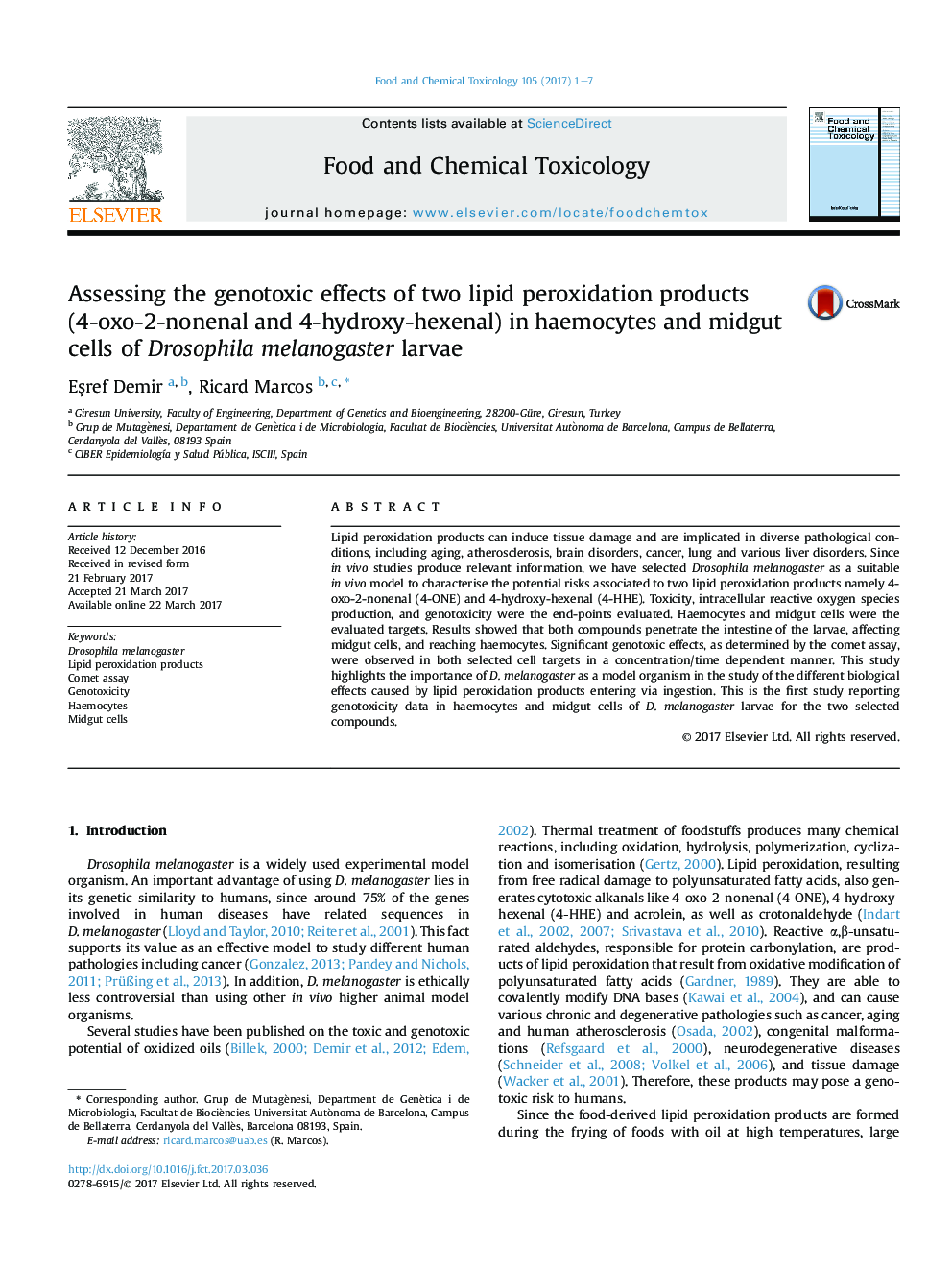| Article ID | Journal | Published Year | Pages | File Type |
|---|---|---|---|---|
| 5560167 | Food and Chemical Toxicology | 2017 | 7 Pages |
â¢Two lipid peroxidation products (4-ONE and 4-HHE) were investigated.â¢Haemocytes and midgut cells of Drosophila were used as a target.â¢Both compounds induced oxidative stress in larval haemocytes and midgut cells.â¢Primary DNA damage (comet assay) were induced in both target cells.
Lipid peroxidation products can induce tissue damage and are implicated in diverse pathological conditions, including aging, atherosclerosis, brain disorders, cancer, lung and various liver disorders. Since in vivo studies produce relevant information, we have selected Drosophila melanogaster as a suitable in vivo model to characterise the potential risks associated to two lipid peroxidation products namely 4-oxo-2-nonenal (4-ONE) and 4-hydroxy-hexenal (4-HHE). Toxicity, intracellular reactive oxygen species production, and genotoxicity were the end-points evaluated. Haemocytes and midgut cells were the evaluated targets. Results showed that both compounds penetrate the intestine of the larvae, affecting midgut cells, and reaching haemocytes. Significant genotoxic effects, as determined by the comet assay, were observed in both selected cell targets in a concentration/time dependent manner. This study highlights the importance of D. melanogaster as a model organism in the study of the different biological effects caused by lipid peroxidation products entering via ingestion. This is the first study reporting genotoxicity data in haemocytes and midgut cells of D. melanogaster larvae for the two selected compounds.
Graphical abstractDownload high-res image (144KB)Download full-size image
